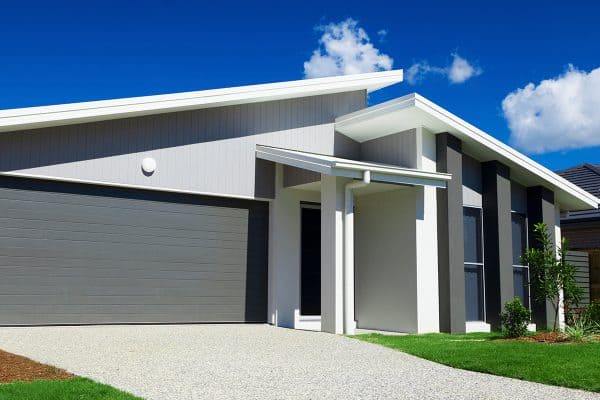It's crucial to understand the distinctions between interior and exterior paint before starting your painting project so that you can select the appropriate type. That's why we looked for the differences between the two. And here is what we found:
The main distinction between these two paint types is the type of resin used to produce them. The resins used in the production of exterior paints must be softer since exterior paint must endure exposure to moisture and extreme temperature changes.
On the other hand, huge temperature swings and dampness are not a problem for interior paints. Consequently, the resins utilized in their production can be stiffer.
Stay with us as we discuss the characteristics of interior and exterior paint. And in case you're wondering if you can use these paints interchangeably, we'll also talk about that below.
Additionally, we'll also tell you when to touch up or repaint your walls and how long interior and exterior paint last. So, read on!
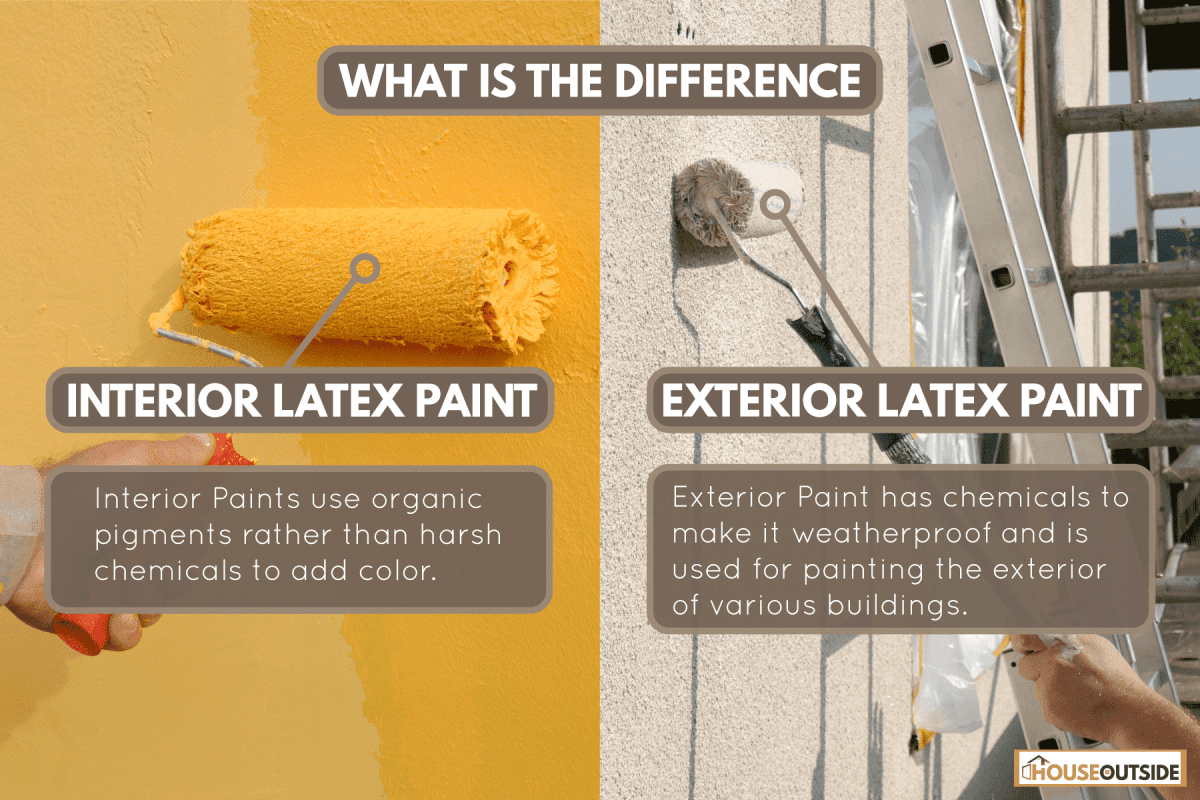
What Are The Characteristics Of Interior Paints?
To have a better understanding of interior paints, here are some of their notable characteristics.
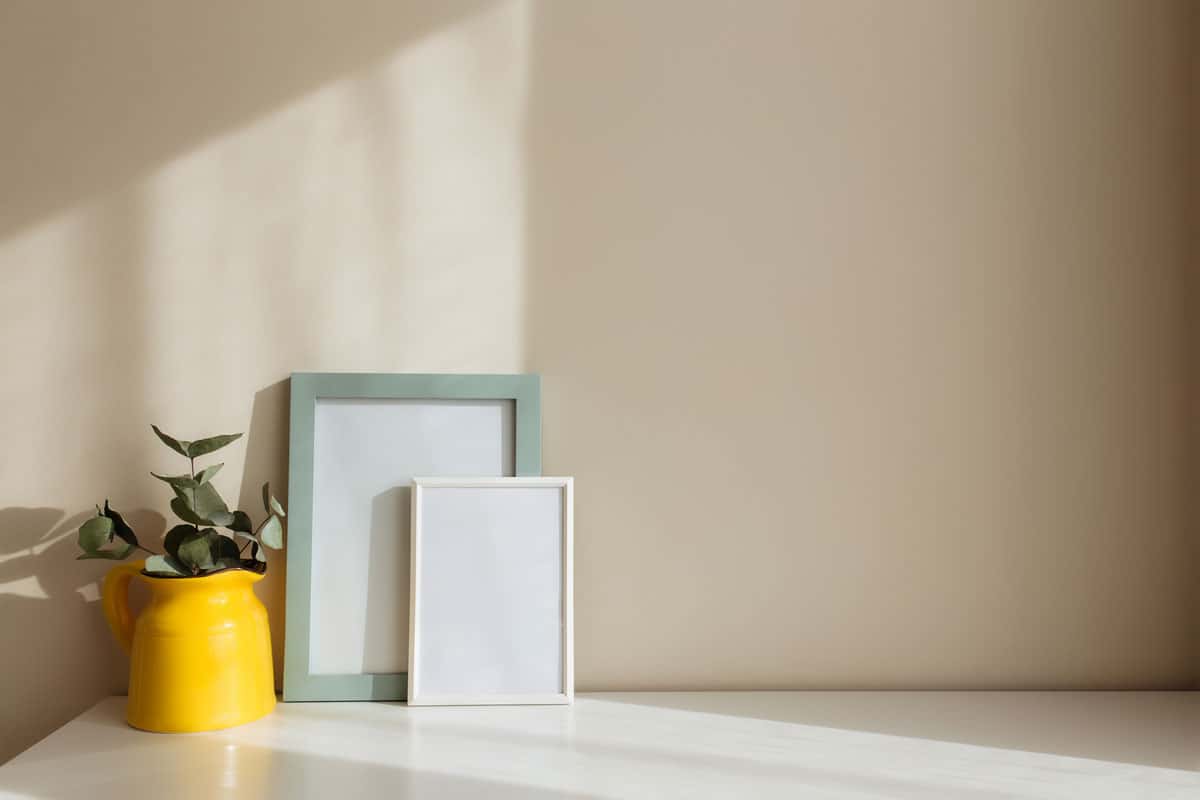
- Interior paint can withstand occasional deep cleaning -a good scrubbing won't harm the surface, or soaking for stain removal.
- Interior paint is low in volatile organic compounds (VOCs), typically using natural pigments versus chemical coloring.
- Additionally, they are more prone to fade, flake, and crack.
- This kind of paint is applied for aesthetic purposes.
- There are numerous different faux-finish effects and many different sorts of finishes available for interior paints, including matte, satin, eggshell, semi-gloss, and gloss.
What Are The Characteristics Of Exterior Paints?

On the other hand, these are the characteristics of exterior paints.
- Exterior paint is basically weatherproof; it resists fading or cracking despite enduring UV exposure, windblown debris, rain, sleet, or snow. This also means these paints contain higher levels of VOCs than interior paints.
- Mildewcides are often added to the exterior paints.
- Exterior paints have fewer finish options. Usually, it only offers flat, semi-gloss, or gloss enamel.
- Even though oil-based exterior paints are becoming less common, they still exist. In comparison to water-based paints, oil-based paints generate substantially larger amounts of VOCs that damage the ozone layer. Their sale and use are forbidden by law in some areas of the United States.
Can You Use Interior Paint On Outside Surfaces?
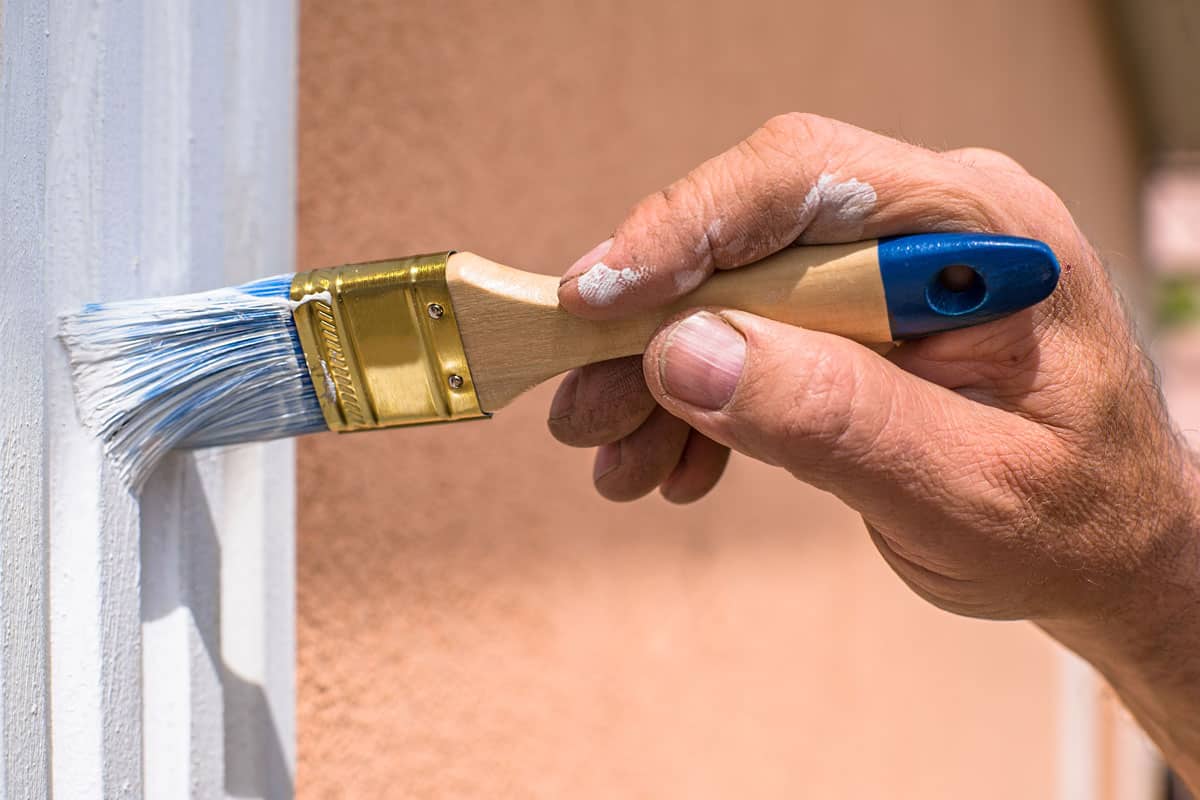
No, it's not possible. Interior paint isn't made to survive weather extremes like rain, snow, wind, UV, or mildew. The finish is too porous and contains less pigment and binding resins than outdoor paints, which causes the paint to fade, flake, fracture, and powder more quickly.
In addition to issues about longevity, interior paint is thinner than exterior paint and does not stick as well to exterior surfaces. You'll typically apply additional coats to get the same coverage. Even with several applications, it won't seem as uniform as outside paint would.
Last but not least, since interior paint isn't meant to dry outdoors, it takes longer to dry.
Even if you are successful in getting good coverage with interior paint, the work is not finished. You'll note that interior paint on exterior surfaces ages and cracks over time, necessitating more regular touch-ups.
Can You Use Exterior Paint On Indoor Surfaces?
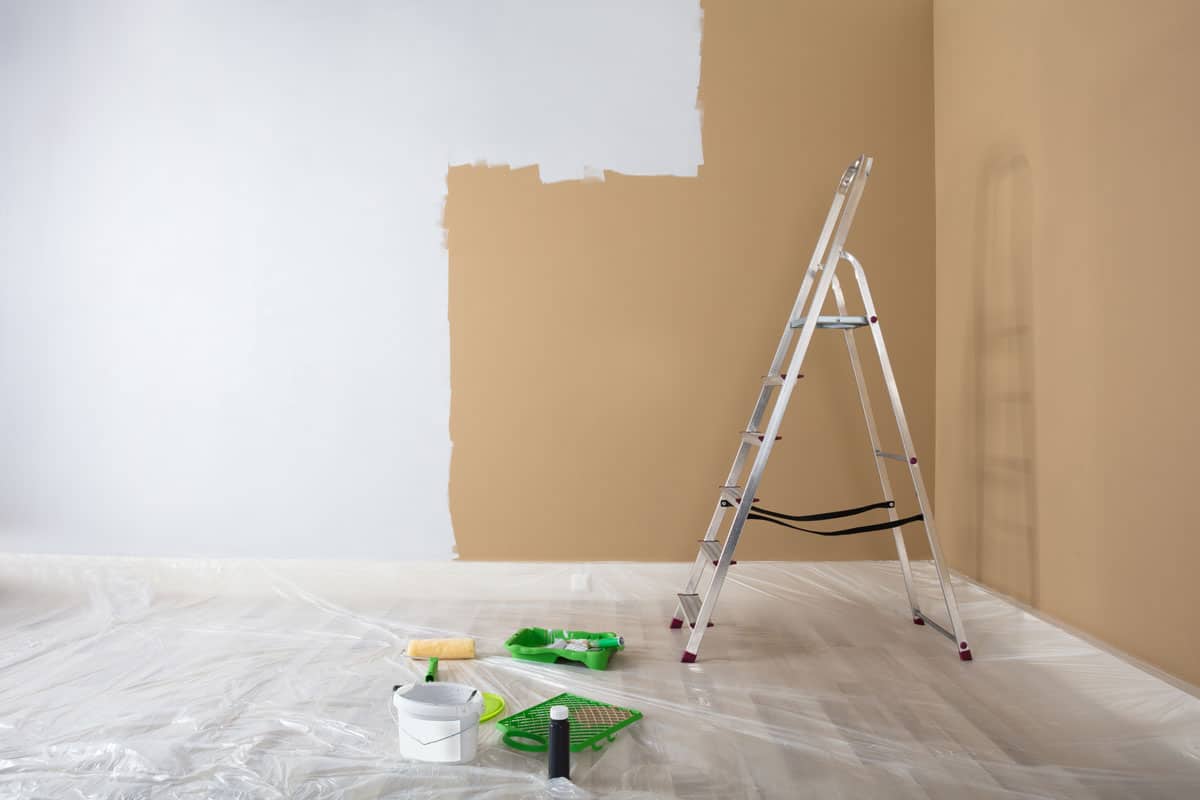
Although it might seem like a good idea, exterior paint is meant for outdoor use only.
It is not advised to use exterior paint indoors. It is a more intense combination of pigments, additives, binders, and volatile organic compounds. Even after drying, the finish still emits harmful fumes and is softer and more flexible. It can be harmful to people and animals, and the finish isn't as appealing.
Furthermore, even though exterior paints are durable for outside use, they are more prone to scuffing and scratches when you use them indoors.
When Should You Repaint Or Touch Up Your Wall?
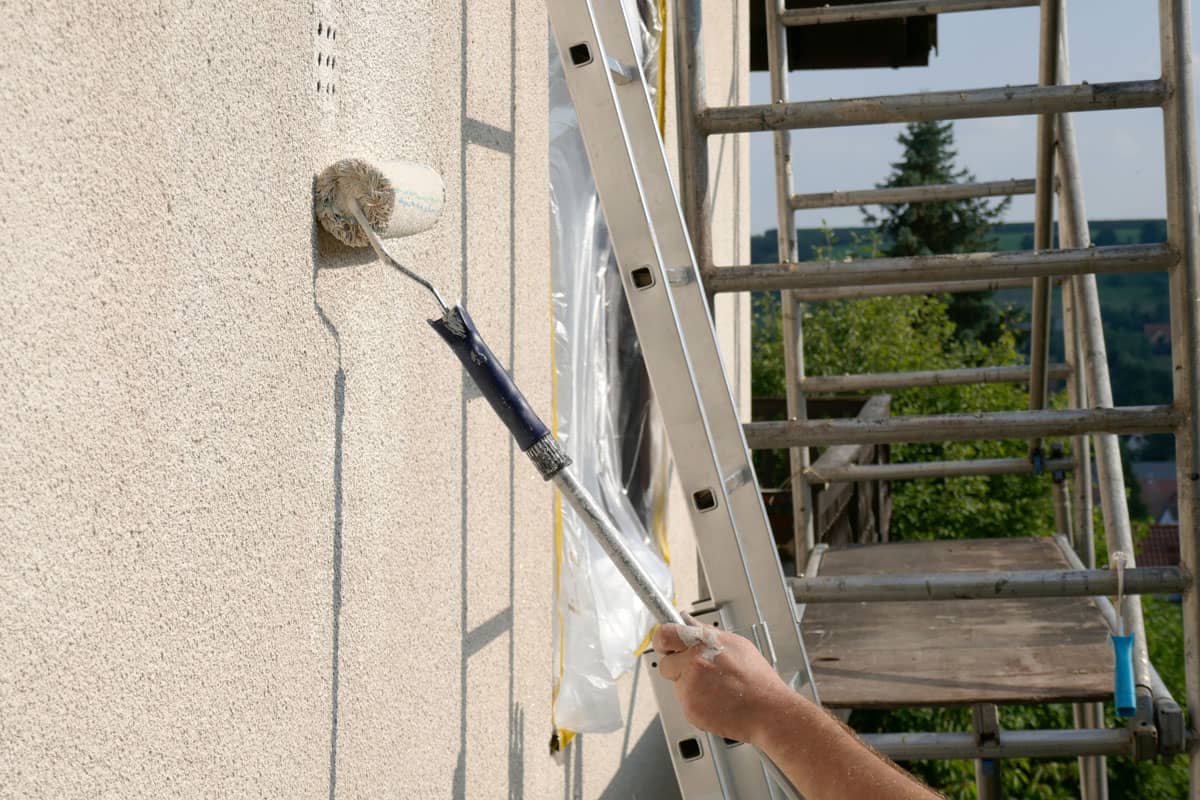
The paint on the walls of your house may start to fade or lose its sheen over time. No matter how high-quality it is, paint eventually wears out, and a variety of factors can influence how well you preserve it on your walls.
Even the best paint treatments can be damaged by furniture scratches, nail holes from hanging portraits or wall art, or even rubbing off.
When a chair hits a wall, you may just need a tiny amount of touch-up paint in certain instances, but in other instances, it is far preferable to completely repaint the walls of your house.
So, how do you know when to touch it up and when to repaint it? Listed below are some instances that might require you to either touch up or repaint.
Touch Up Time
Generally speaking, rather than having to repaint the entire wall or room, if the damage to the walls is small and contained or the paint is less than a year old, you should be able to simply touch up the small area.
A little paint touch-up will suffice if you want to:
- hide minor faults like dings, nicks, scratches, chips, scuffs, or marks on the wall
- fix faults in places that aren't too obvious
- fix flat or low-sheen paint
- touch up missed minor areas with paint
Repaint
Even the tiniest touch-up can be challenging to mix or match, leaving you with walls that have different paint colors or spots that don't match the surroundings.
The interior of your home can be painted, which is a reasonably easy and affordable way to improve the look and state of the interior walls. While touch-up paint can offer a quicker remedy, repainting frequently offers a more robust answer.
You might want to prefer repainting your walls when:
- the paint has visible symptoms of aging or is flaking, peeling, discolored, or otherwise damaged
- the scratches or dents are more severe or numerous
- you want to change the look of your home or when you don't like the hue
- five years after the first paint
- using paint with a glossy finish
- weaknesses are prominently displayed
How Long Do Interior And Exterior Paints Last?
A well-done interior paint job will typically last between 5 and 10 years, and sometimes even longer. Additionally, the lifespan of your exterior painting project should be between 7 and 10 years.
The durability of your paint, however, depends on a variety of factors such as the caliber of the paints and services employed, as well as the health of the walls and the local climate.
Final Words
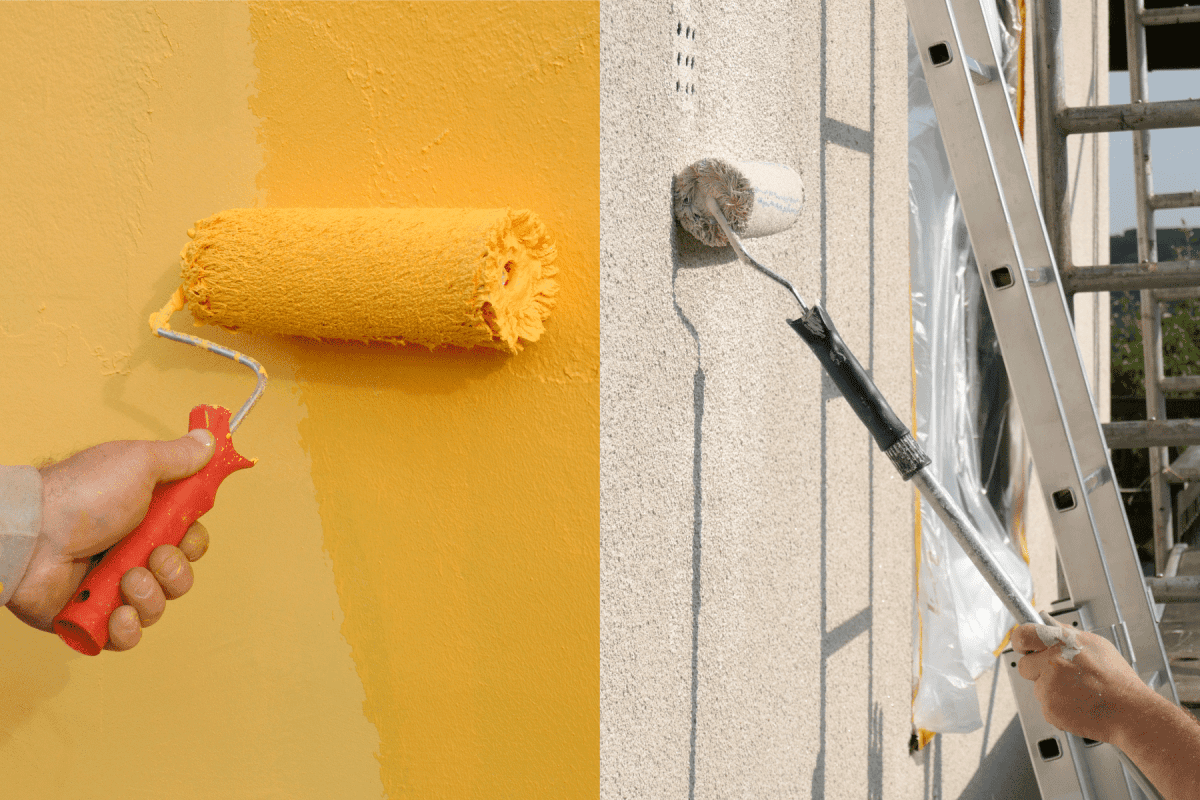
There are a variety of differences between interior and exterior paint, but the most notable of all is the type of resin used to make them.
Additionally, it is important to know the difference between interior and exterior paint. This is because using the wrong type of paint can cause serious harm to your health. Not only that, but it can also affect the appearance and durability of your paint when you use them interchangeably.
If you enjoyed this post, you can check out these other articles:

